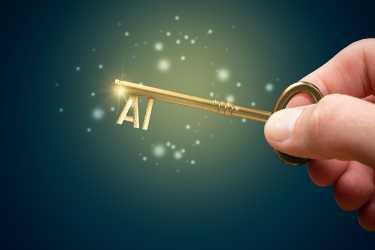Nanotech: Fact and Fiction
Nanocosm: Nanotechnology and the Big Changes Coming from the Inconceivably Small
By William Illsey Atkinson
Amacom, 2003, $24.95
Nanocosm is a midsize book about the big ideas surrounding an incredibly small technology. Author William Illsey Atkinson rolls out a road map to a world as different from today’s world as today is from the age of the horse and buggy. He further believes that that road map depicts a very short trip.
Atkinson conveys descriptions in layman’s terms and interprets conversations with global research leaders while taking readers through the history of nanotechnology (the manipulation of the structure of matter at the atomic level). He demonstrates where the technology stands today (it lets tennis balls stay inflated much longer than ever before, for instance) and predicts where it’s headed in the future (DNA computing in five years, nearly impervious carbon nanotube fabrics in 10).
Atkinson has a knack for making highly technical, theoretical topics seem immediate and visceral, although he’s not above being a bit of a breathless booster at times. In short, while CIOs won’t find anything here to take to the next board meeting, this book is full of interesting ideas, many of which may have a serious impact on our near-future lives.
-Christopher Lindquist
Prey: A Novel
By Michael Crichton
HarperCollins Publishers, 2002, $26.95
Feeling a little iffy about nanotechnology? Do you think man-made, microscopic machinery is too much for humans to handle? So does Michael Crichton. In his latest novel, Prey, he presents the nuts and bolts of nanotechnology in wonderful detail and explores the motivations that scientists bequeath to these manpowered particles. In the story, foolhardy scientists implant a “predator/prey” program into the atom-size machines, which gives them the capacity to learn and evolve. Instead they develop a new goal for themselves: to hunt living things.
This is the point at which Prey morphs into the sci-fi movie it is destined to become. Before you know it, exponentially evolved nanoclusters have formed menacing swarms of human-hungry micromachines that dart from one scene to the next. The novel achieves the pace of a movie on paper. Following the established Crichton creed, this novel captivates the reader with engaging subject matter, but it lacks the depths of nuance and subtlety.
-Daniel J. Horgan
The New BookShelf
You can translate biology into information and information into biology because both operate on the basis of coded instructions, and those codes are translatable. When you get down at the bottom of things, code is simply code.
-From It’s Alive: The Coming Convergence of Information, Biology and Business, by Christopher Meyer and Stan Davis (Crown Business, May 2003)
CIO Best-Seller List
5 Good to Great: Why Some Companies Make the Leap…and Others Don’t
By Jim Collins
HarperCollins Publishers, 2001 4 Final Accounting: Ambition, Greed, and the Fall of Arthur Andersen
By Barbara Ley Toffler
Broadway Books, 2003 3 Smart Mobs: The Next Social Revolution
By Howard Rheingold
Perseus Publishing, 2002 2 Pigs at the Trough: How Corporate Greed and Political Corruption Are Undermining America
By Arianna Huffington
Crown Publishing Group, 2003 1 World on Fire: How Exporting Free Market Democracy Breeds Ethnic Hatred and Global Instability
By Amy Chua
Doubleday, 2002
Source: April 9, 2003, data compiled by WordsWorth Books, Cambridge, Mass.








